MacBook Pros are lightweight yet powerful laptops marketed toward creative professionals, college students, and business users. But does their portable performance mean they last a long time?
As someone who services Apple laptops frequently, I get this question all the time. Whether you already own a MacBook Pro or are thinking of buying one, who wouldn’t want to ensure that their laptop will last as long as possible?
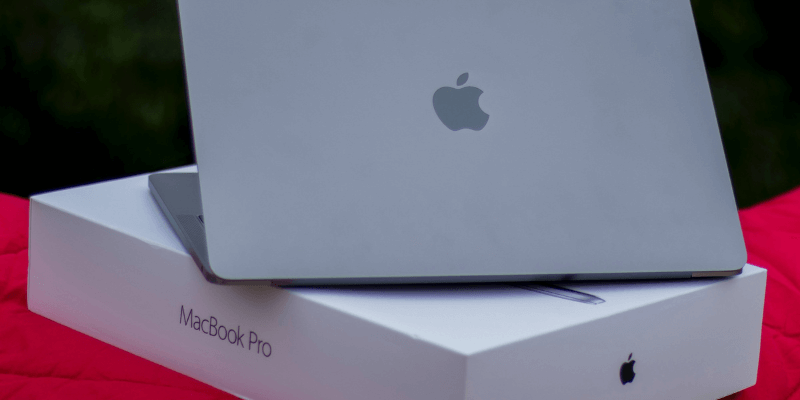
Generally speaking, the MacBook Pro is a quality laptop that will last, on average, 5-7 years, depending on your level of usage. Still, it is possible to use your MacBook Pro for even longer if you take care of it properly.
Today’s article will discuss what contributes to a MacBook Pro’s longevity, and how you can take care of your system to get the most possible life out of it.
Let’s get to it.
Table of Contents
Key Takeaways
- For MacBook Pro users who consider themselves “power users” or “heavy users,” the typical lifespan spans at least 5 years.
- For occasional MacBook Pro use, such as web browsing, school work, and light multimedia, the average lifespan extends to at least 7 years.
- When considering a new computer, opt for the MacBook Pro if you require a more robust and powerful system, while the MacBook Air is ideal for lighter usage levels.
- You can’t prevent hardware failure entirely, such as your battery wearing out, but you can take steps to slow the degradation of your system’s components.
- Maintain the health of your MacBook Pro by practicing proper physical care, monitoring battery health, ensuring regular software updates, and vigilantly checking for malware and system junk.
Are MacBook Pros Built to Last?
It is no secret in the technology industry that Apple creates high-quality, well-developed, beautiful, and unique products.
However, they often come with a pretty high price tag. Whether you are looking to put your hard-earned money toward a brand-new laptop, or are looking to purchase a used MacBook Pro that could be a few years old, it is critical information to know how long you should expect that MacBook Pro to last after purchase.
Average Lifespan of a MacBook Pro – Hardware
In simple terms, we can use “high usage”, “average usage”, and “light usage” to describe the three levels of the use of your MacBook Pro.
If you are a high-usage user (think graphics editing, high graphics gaming, high CPU usage, high battery usage), you can expect to get about 5-6 years from your MacBook Pro.
At about the 5-year mark, this is when we will begin to see the battery decline. This will likely be more of a nuisance than requiring a completely new computer.
If you are an average user, such as a student, video streaming, or middle-ground battery usage, On average, you should see 7.2 years from your Macbook Pro, according to experts.
Now, keep in mind, this is an average. So, your MacBook Pro won’t die exactly at 7 years, 2 months, and however many days. Still, similar to high-usage users, you will see the battery life begin to decline no matter what, as they are consumable components.
Lastly, as a light user, you will likely be able to easily get over that 7-year mark of usage from your MacBook Pro. Light Usage is qualified as basic web surfing, email use, etc. In these circumstances, a MacBook Pro could last you a very long time (as I have stated in previous articles, my mom is still using my 12+-year-old MacBook Pro from high school)!
How Long Will Apple Support MacBook Pro Software
Oftentimes, Apple will consider their devices “Vintage” after 4-6 years of them being on the market. What this means for you as the user, is that while they will still support the software, their focus will likely be on the newer devices.
They will still produce new software, but any bug fixes, security updates, etc., will become fewer and farther between during this point in time. In terms of hardware, they will still support hardware fixes at genuine Apple stores, but it may become more difficult and more expensive than it is worth for these fixes.
After 7 years, Apple considers its devices “Obsolete”. As a user, obsolete means that Apple will no longer support software updates. While you will be able to remain using the latest software that you have, there will no longer be bug fixes or security updates released at this time.
If there is a security breach found, it will not be fixed, and you could potentially be leaving your data open to security problems. In terms of hardware, they will also no longer support the fixes in genuine Apple stores, and you will likely need to go to a third party in order to get any repairs done to your MacBook Pro when it is over 7 years old.
How to Keep Your MacBook Pro “Healthy”
So, how do we make sure that we get the most possible usage out of our MacBook Pros? If you are like me, you prefer to run your MacBook to the “Obsolete” phase before getting a new one. While I love upgrading to the latest technology too, I also like to say that you should keep using something if it meets your needs and works for you.
The first two tips, while they may seem “obvious” or “simple”, can make all of the difference.
First, ensure that you are keeping your MacBook Pro safe from damage. This means keeping it in a protective case while you are traveling, keeping your water or other beverages away from it (especially if you are prone to spilling), and keeping it away from any rambunctious pets.
The second is to keep your MacBook Pro from overheating. Since a MacBook Pro does have a fan in the design, it is significantly less likely to overheat than the MacBook Air counterpart.
However, this does not mean that it is completely exempt from overheating. Be sure to keep your MacBook Pro in cool and dry locations. Also, be sure to use your MacBook Pro on a hard surface, such as a table or desk, rather than directly on a blanket blocking the ventilation areas.
Taking Care of Your MacBook Pro Battery
As we have discussed, the slowing down of your battery is likely the first symptom that you will see when your MacBook begins to get older. As research on lithium batteries progresses, we have learned that allowing a lithium battery to completely die often, can be detrimental to its overall health, and it will no longer be able to charge all the way.
Secondly, exposing your MacBook Pro to extreme temperatures, especially prolonged exposure to high heat, can reduce its battery capacity and shorten its lifespan. Therefore, it’s crucial to keep your MacBook in a cool and dry environment, and avoid leaving it in hot cars or direct sunlight for extended periods, as suggested by Battery University.
Knowing these two things, it is suggested to keep your MacBook Pro battery between 20-80% as much as possible.
Allowing the MacBook Pro to die once in a while or charge for an hour or two longer after it hits 100% won’t kill it completely, but, be mindful not to allow these things to happen all the time, as your battery health will quickly decline.
Luckily, Apple allows us to check our battery usage by taking the following steps:
Step 1: Select the battery icon in the menu and click Battery Settings.
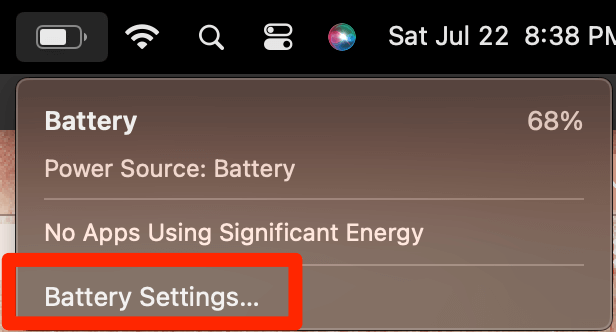
Step 2: Here, we can see a lot of charging information about our battery, and we can look at our Battery Health.
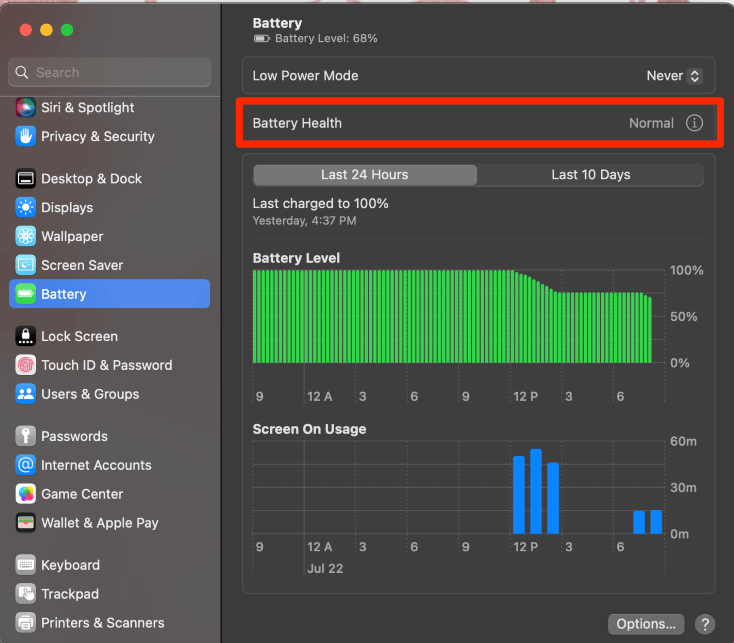
Step 3: Clicking on the information icon, we find out the following information.
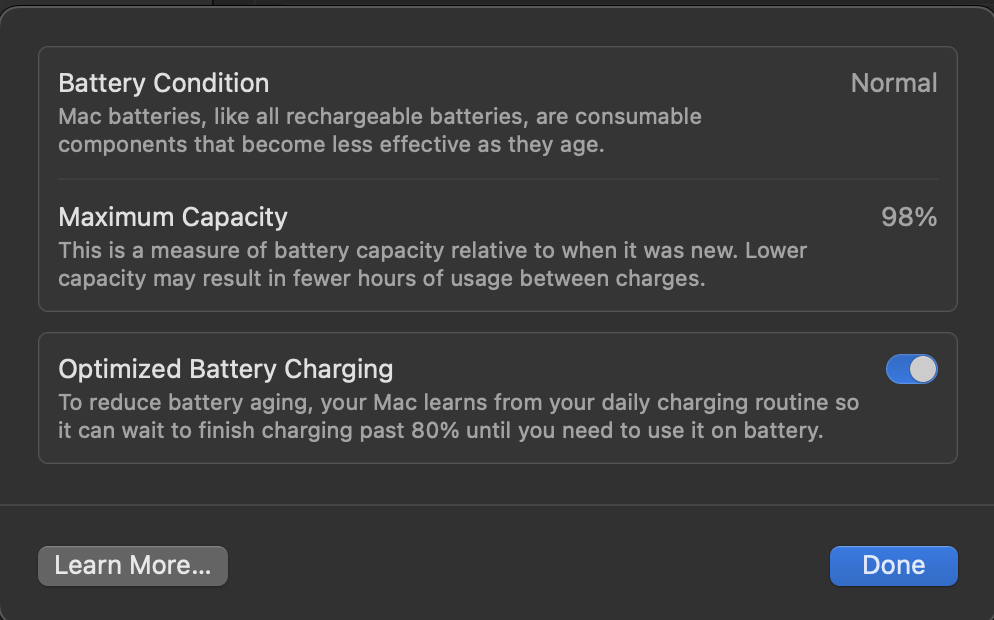
We can use this information to keep an eye on our battery and optimize our battery charging to keep our MacBook Pro as healthy as possible and keep it lasting that full 7+ years.
Your MacBook will also provide battery warnings in this Battery menu. If you see a service battery warning or something similar, you might need to address it or even replace the battery.
Keeping your Software Up to Date
Lastly, the most important thing that you can do for your MacBook Pro is to keep the software up to date. This is extremely important because Apple tends to release performance improvements, security updates, and more with their macOS updates.
Performance updates are critical to ensure that your MacBook can run at its highest potential for as long as possible. These updates can include making the memory more efficient, fixing bugs, etc. If you keep up with these updates, you give your MacBook Pro the best chance to last as long as possible.
As we discussed previously, Apple will stop releasing software for your MacBook Pro after around 7 years. This means that once you are no longer receiving updates, you may become more susceptible to malware attacks as the security features will no longer continue to be updated.
Staying Clear of Malware and System Junk
If you keep your system up to date and keep an eye on your battery, you’re off to a great start. Still, you should make sure your Mac stays clean in terms of malware and system junk.
One of my favorite apps for staying on top of this area of maintenance is CleanMyMac X (review). While not entirely free, it does take out a lot of the hassle that comes with performing maintenance tasks on your Mac. After you download and install the program, launch it from your Dock or Applications folder.
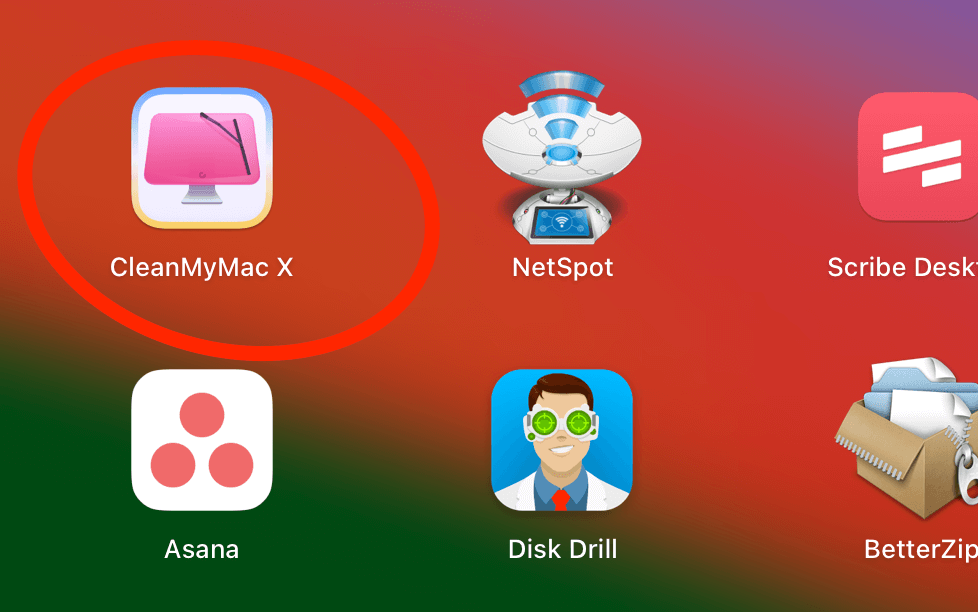
From here, you can choose which task you want to take care of first. The most convenient option is to simply run a smart scan. But you can also detect malware, delete unwanted files, clear unnecessary applications, and run maintenance scripts.
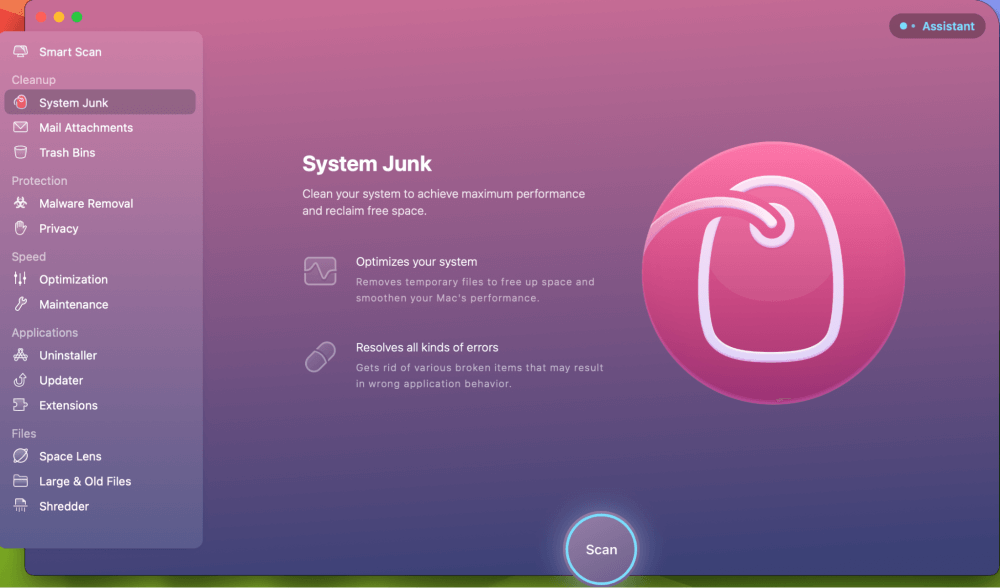
This app will go a long way in ensuring that your MacBook Pro stays healthy for as long as possible, even after Apple discontinues updates.
Final Thoughts
The determining factor on how long your MacBook will last is how much you use it and how well you take care of it. If you are a power user, you might get a shorter lifespan from your computer, while a lighter user may see a longer lifespan from their MacBook Pro.
However, regardless of your usage of your MacBook Pro, if you take the utmost care of it, as we have discussed in this article, you can easily extend the life of your MacBook Pro. Additionally, keeping your Mac running clean and free from malware and system junk is a surefire way to get the most out of it.
What are your favorite features of the MacBook Pro? Do you have a MacBook Pro that has lasted a long time? Let us know in the comments!
